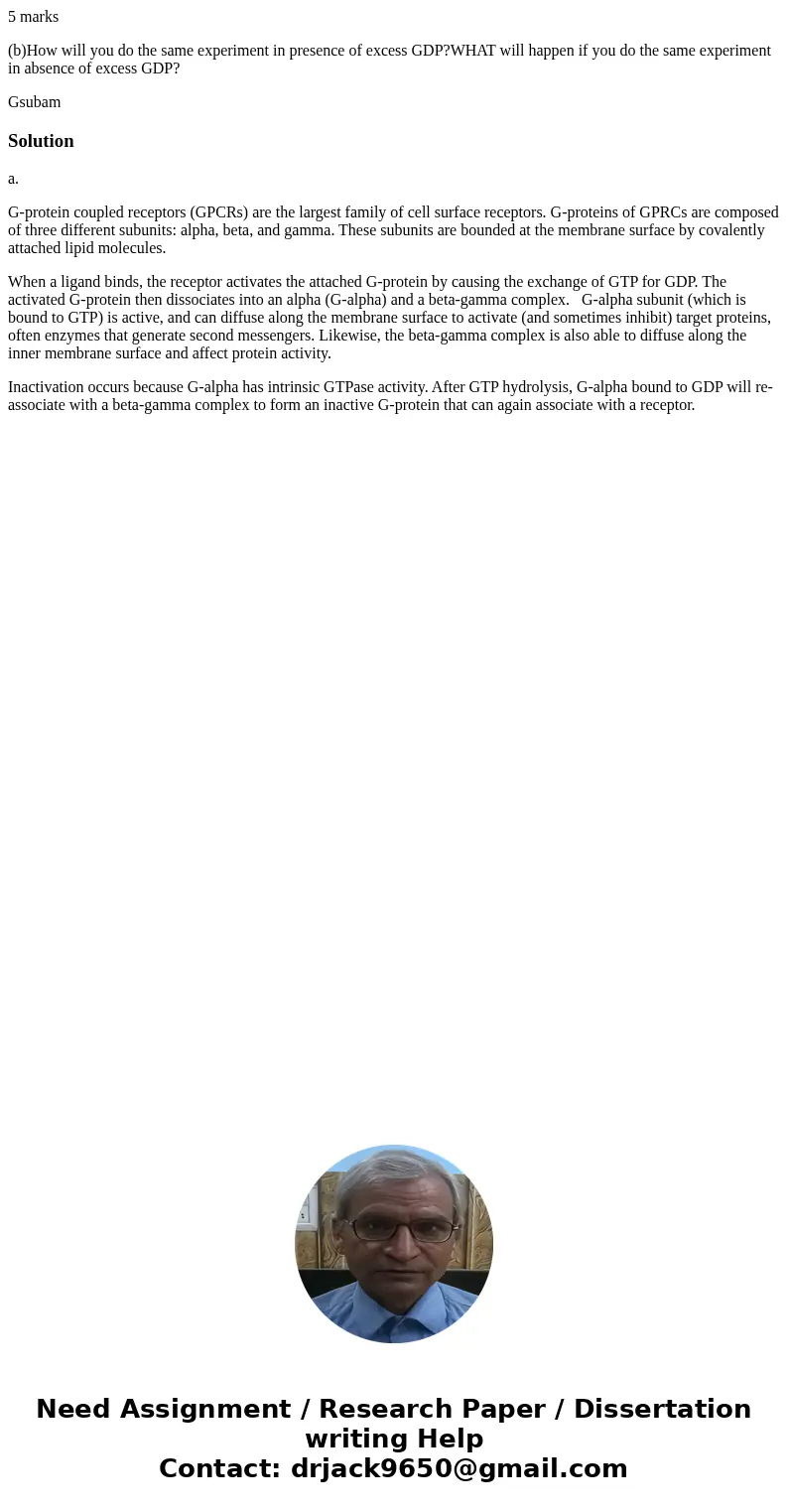5 marks bHow will you do the same experiment in presence of
5 marks
(b)How will you do the same experiment in presence of excess GDP?WHAT will happen if you do the same experiment in absence of excess GDP?
GsubamSolution
a.
G-protein coupled receptors (GPCRs) are the largest family of cell surface receptors. G-proteins of GPRCs are composed of three different subunits: alpha, beta, and gamma. These subunits are bounded at the membrane surface by covalently attached lipid molecules.
When a ligand binds, the receptor activates the attached G-protein by causing the exchange of GTP for GDP. The activated G-protein then dissociates into an alpha (G-alpha) and a beta-gamma complex. G-alpha subunit (which is bound to GTP) is active, and can diffuse along the membrane surface to activate (and sometimes inhibit) target proteins, often enzymes that generate second messengers. Likewise, the beta-gamma complex is also able to diffuse along the inner membrane surface and affect protein activity.
Inactivation occurs because G-alpha has intrinsic GTPase activity. After GTP hydrolysis, G-alpha bound to GDP will re-associate with a beta-gamma complex to form an inactive G-protein that can again associate with a receptor.

 Homework Sourse
Homework Sourse